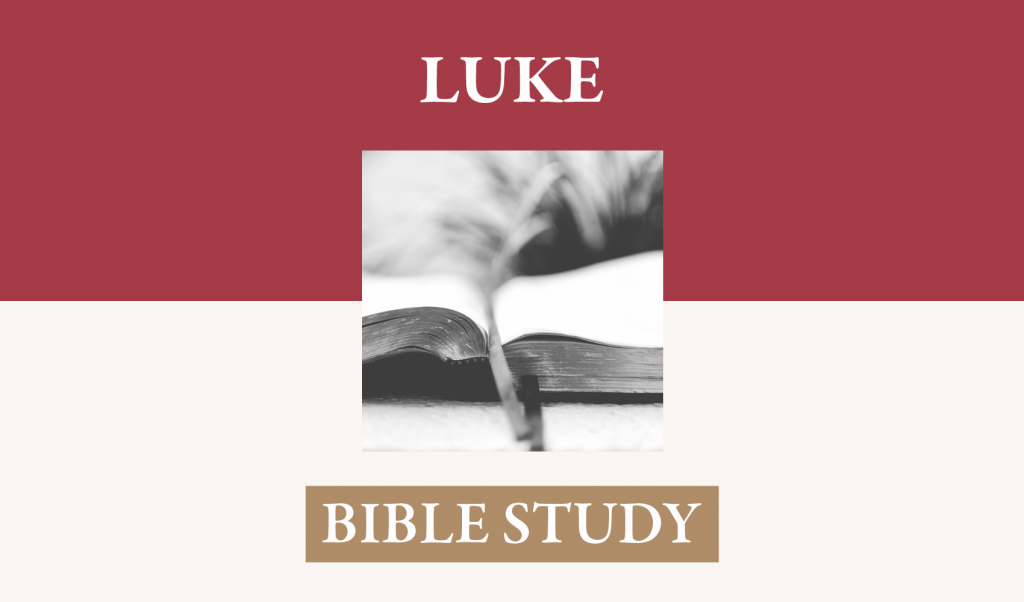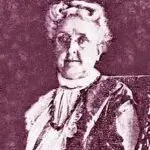Lesson Focus: From a Canaanite woman’s persistent request for Jesus to heal her daughter, and Jesus’ parable teaching His disciples to pray persistently, believers can learn how to pray with persistence.
The Prerequisite of Humility: Matthew 15:21-28.
[21] And Jesus went away from there and withdrew to the district of Tyre and
[25] But she came and knelt before him, saying, "Lord, help me." [26] And he answered, "It is not right to take the children’s bread and throw it to the dogs." [27] She said, "Yes, Lord, yet even the dogs eat the crumbs that fall from their masters’ table." [28] Then Jesus answered her, "O woman, great is your faith! Be it done for you as you desire." And her daughter was healed instantly. [ESV]
This passage not only records Jesus’ withdrawal from the opposition of the Pharisees and teachers of the law but contrasts their approach to the Messiah with that of this woman. They belong to the covenant people but take offense at the conduct of Jesus’ disciples, challenge his authority, and are so defective in understanding the Scriptures that they show themselves not to be plants the heavenly Father has planted. But this woman is a pagan, a descendant of ancient enemies, and with no claim on the God of the covenant. Yet in the end she approaches the Jewish Messiah and with great faith asks only for grace; and her request is granted.
[21] Matthew tells us that Jesus went away, but he does not say from where he made his exit. Perhaps the thought is that he left
[22]
[23-24] Jesus said nothing to her, which is very unusual. He usually responded to any appeal for help, and indeed sometimes He took the initiative and helped before a request was made to Him. Matthew emphasizes His silence by saying that Jesus did not answer a word, but he gives no reason for this. His disciples apparently had no doubts: the woman was a Canaanite, not a Jewess, and to them her crying out was nothing but a nuisance. So they came to Jesus and asked Him to send the woman away. They apparently felt that she was calling on them to do something, and they did not appreciate such a request from one who was both a woman and a Canaanite. But there is no indication that the disciples did not want the woman’s daughter to be healed. They just wanted the woman to stop bothering them. Jesus’ statement in verse 24 seems to indicate that the disciples wanted Him to grant the woman her request so she would leave them alone. He speaks of being sent, another example of His consciousness of mission. His time here on earth was not His own, but He had been sent by the heavenly Father for a specific purpose. That purpose He sought to accomplish, and His whole life was given over to its fulfillment. He speaks now of His mission as only to the lost sheep of the house of
[25-27] But the woman does not give up. Over against Jesus with His words about a mission to
[28] Matthew uses the word great quite often (20 times), but only here does he link it with faith; he has it in an emphatic position so that the greatness received some stress. Only the woman and another Gentile, the centurion at
The Requirement of Determination: Luke 18:1-5.
[1] And he told them a parable to the effect that they ought always to pray and not lose heart.
[2] He said, "In a certain city there was a judge who neither feared God nor respected man.
[3] And there was a widow in that city who kept coming to him and saying, ‘Give me justice against my adversary.’ [4] For a while he refused, but afterward he said to himself, ‘Though I neither fear God nor respect man, [5] yet because this widow keeps bothering me, I will give her justice, so that she will not beat me down by her continual coming.’" [ESV]
[1] This verse gives the parable’s context and purpose. Jesus is telling the parable to them, which must look back to 17:22, where the disciples are the audience. The call is to continued prayer, not in the sense of praying at all times, but in praying again and again. The use of ought makes such prayer a moral imperative. The context of Luke 18:8 makes clear that the ultimate request is for God’s justice and the Son of Man’s return. The point is that in the midst of persecution and possible delay, the disciple should not stop praying for justice and for the return that will bring justice.
[2-3] The story begins with a judge whose reputation is clearly stated. The judge is probably a Jew and may have been a powerful man, since the Romans allowed the Jews to manage many of their own legal affairs. The Romans stayed out of most matters, except those involving capital punishment. Many concerns were left to religious authorities (e.g., the Sanhedrin and synagogue elders), but because this man is described as one who does not fear God it is unlikely that he is a religious leader. He is possibly a political type of judge. The dispute is probably financial. Perhaps the widow was not being cared for by her husband’s estate, although her reference to an adversary suggests a problem with someone alive. Ideally, judges should defend the poor and widowed. This judge, however, did not care what people thought and was not the type to be moved out of compassion. The story’s second character is the helpless widow. She need not have been very old, since in this culture women married at age thirteen or fourteen and widows were frequently quite young. The Old Testament is clear that widows should be helped. The widow is probably facing some financial difficulty and so appeals to the judge again and again to give her justice. She seeks relief from the opponent who wronged her. The helpless, powerless woman appeals over and over to someone with the authority and power to vindicate her.
[4-5] The judge did not respond to the widow’s pleas for some time. As often as the widow came, he refused. But as verse 5 shows, she just kept coming because her case had to be heard. No specific reason for the refusal is given, but the judge’s character is a clue that he is not sensitive to people’s needs. He is here living up to his reputation as a nonrespecter of people. The appeals continue, so after a while the judge begins to engage in some internal reflection. Knowing his reputation and perhaps even taking pride in it, the judge repeats the description of him given in verse 2. This judge knows that others think that he will stand up to anyone and disregard their needs. He does not care what people think of him. But as verse 5 makes clear, the woman is getting on the judge’s nerves. An additional description gives the judge’s frame of mind: he fears that the woman will beat him down by her continual coming. This beating him down refers to the woman wearing him down emotionally by making herself a nuisance. The judge foresees that the woman’s constant requests will eventually wear him out, and so he purposes to take up her cause. He wants to avoid the hassle of her coming on a regular basis. He decides to vindicate her in order to stop her from bothering him any longer. The woman’s constant intercession has brought success. Here is the example that the disciples’ prayer should emulate.
The Fulfillment of Expectation: Luke 18:6-8.
[6] And the Lord said, "Hear what the unrighteous judge says. [7] And will not God give justice to his elect, who cry to him day and night? Will he delay long over them? [8] I tell you, he will give justice to them speedily. Nevertheless, when the Son of Man comes, will he find faith on earth?" [ESV]
[6-7] Jesus now turns his attention to application. Jesus tells the disciples to reflect on the judge’s response. The judge is called unrighteous because of his lack of compassion toward the woman, a description that recalls the judge’s characterization in verses 2 and 4. The point of application plays off this portrait in a lesser-to-greater argument: if such an insensitive character responds to repeated pleas from someone he does not know or care about, how much more will a righteous God respond to His children. God’s response is laid out in two closely connected rhetorical questions. Justice links Jesus’ application to the parable, since justice was also used in verses 3 and 5. God will bring justice in the face of trouble. He will judge those who persecute the righteous. The promise imbedded in this question is that God will vindicate His elect. The need for their rescue is expressed by their constantly entreating God: day and night. Luke elsewhere uses cry to describe the cry of those in need of mercy [9:38; 18:38], and the sense is the same here.
[8] This verse makes two additional points. First, Jesus answers His rhetorical question about God’s delay in verse 7 by noting that God will speedily bring vindication for His elect. The point is God has not forgotten His elect. He will act soon to establish them and deal with their enemies. A remark about a soon coming implies, nonetheless, a delay. Since delay in vindication may become an excuse to lose faith, Jesus goes on to say in effect, “Pray and look for the return,” knowing that it will come. Though the delay seems long, after the vindication it will seem short. This idea of awaiting the return raises the question of what people will be doing when it comes. Will they be praying and looking for it? Jesus’ last remark serves as a rhetorical call to continue to pray and hope for justice. He wonders if the Son of Man will find faith on earth when he comes. The faith that the Son of Man will look for is not simply an identification with His message nor a faith that avoids strange teaching. Rather the context indicates that the Son of Man will be looking for those who are looking for Him. In the interim, will believers keep the faith? Will they continue to pray and look for justice? Even though Jesus expresses the idea as a question, he is exhorting them to keep watching. He is calling for a faith that perseveres in allegiance to Jesus. The message is, “Be vigilant.” The disciple is to look forward to the day when Jesus will come and defend His elect by exercising righteous judgment over the whole earth. Numerous texts in Luke call for disciples to keep watch [12:35,40,43,46; 17:24,26-30].
Questions for Discussion:
1. How does the woman address Jesus? What does this tell us about her understanding of who Jesus is and who she is in relationship to Him? What character traits does the woman show? What do we learn about prayer from this story?
2. Why did Jesus treat the woman like He did? What did Jesus understand His mission to be? Why did Jesus end up granting the woman’s request? What does this say about the importance of faith when we pray?
3. What was the purpose of the parable in Luke 18:1-5? (Note, normally in a parable there is only one central truth taught. We should not attempt to find meaning in every aspect of the parable, but rather look for the essential truth taught.)
4. What is the “lesser to greater” argument used by Jesus to explain the parable (see 18:6-8)? Why are we to be persistent in our prayers? Why does God, who can answer our prayers immediately, often delay in answering our prayers?
References:
Matthew, D.A. Carson, EBC, Zondervan.
The Gospel according to Matthew, Leon Morris, Pillar NTC, Eerdmans.
Luke, Vol. 1, Darrell Bock, Baker.
Commentary on the Gospel of Luke, Norval Geldenhuys, Eerdmans.

















